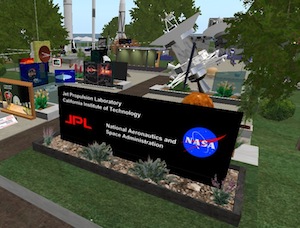Online a lot of the time
Ritual, Fetish, SignAuthor: Ken Hillis
Publisher: Duke University Press
When my editor sent me this book to read and review, the title and intriguing cover image prepared me for an engaging and witty romp through online usage, telepresence, identity and more littered with illustrative reminiscences. Something to be read, savoured and enjoyed.
In that, I was initially somewhat disappointed. The book is truly dense, more reminiscent of a thesis (or several), backed with copious notes and bibliography. The dichotomy between title/cover and contents amusingly reminded me of the old maxim about judging a book by its cover. Nevertheless, I stalled on my first attempt to tackle the book; and then again on the second attempt.
The third time around I’d adjusted my expectations, and Hillis’ treatise does actually contain everything that I’d been looking for, and quite a bit more.
You might be fooled into thinking that the book is about the Web, virtual environments, online chatrooms and so forth. It isn’t, really – at least not solely. It’s about us … people, humanity, society, groups and individuals. It’s about our psychology, narratives, fetishes, quirks, rituals, expressions and signs.
It’s about the one thing that makes the virtual environments, the Web, and the Internet important: people.
Are networked individuals always running after the truth that passes them by even as it remains right behind and within them, a part of it lingering, like a cosmetic, on the surface of their “soul”? Does ‘here” for them always already mean “everywhere else”? These are the questions that, ironically, tend to get dismissed as (implicitly the “wrong kind” of) metaphysics by those who argue for the experiential reality of digital telepresence. – From “The Political Trace”, Chapter 3: SIGNS
You might find the prose and style to be fearfully dense, with paragraphs often running for more than a page. This is no ‘For Dummies’ book. This is one for the serious thinker who wants to be treated like an adult, and not coddled or talked down to.
Words and images, operating within specific sociopolitical circumstances, differently represent the possibility and potential of experience without a subject. However, particularly given the digitization’s opening of typography to new forms of visual design, there are increasingly meaningful overlaps in the ongoing expectations we bring to typographic and image forms, even as they each help organize in different ways what we find meaningful and how we do so. Theorizing the increasingly leaky experiential boundary between words and images has important implications for how subjectivity is organized if we are at the historical conjunction where the Web must be taken seriously as not only beginning to renovate some of literature’s forms but also forms of social relations. – From “Graphical Chat’s Debt to Free Indirect Discourse”, Chapter 4: AVATARS BECOME /ME
While I may not ordinarily be able to compose a higher praise for a book than that it makes you think good and hard about its foundation and topics, perhaps there’s something to be said for at least some accessibility.
Whether the text contains any truly revolutionary thought on the subjects of virtual environments, avatars, identities and telepresence is a bit harder to say. It has given me so much to think on that it could be quite some time before I can reasonably answer that question.
Nevertheless, if you’re an avid, virtual-worlds thinker with a mature attitude and able to keep your head above water in the deepest portions of the English language vocabulary, this book is definitely for you.





Recent Comments